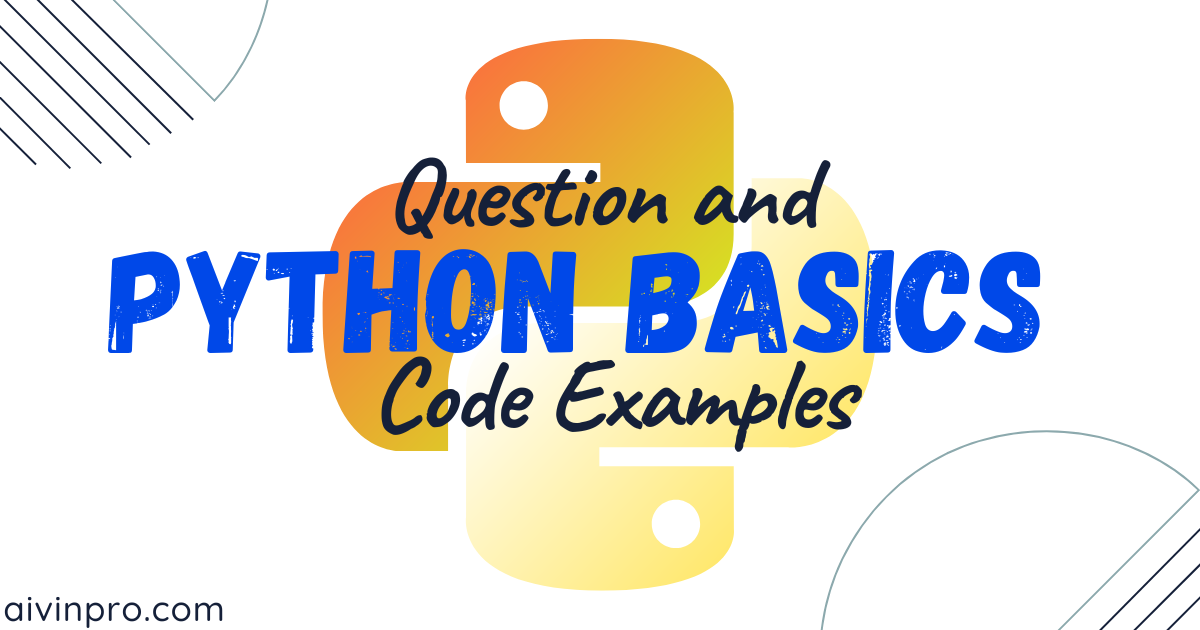Python is one of the most functional and user-friendly programming language in this digital world. Whether you are a beginner or just want to enhance your skills, it is important to understand the basics.
In this blog, we will explore some important python questions and provide code examples to illustrate key concepts.
Table of Contents
1. How to Print a String in Python?
In Python printing strings is simple and straightforward. You can use the print() function to display text or other data types.
#Example:
#Input:
print("Hello, World!")
#Output:
Hello, World!2. How to Declare Variables and Data?
In Python, you do not need to explicitly declare the data type of a variable. The value supplied determines the type that the programming language assigns.
#Example:
# Integer
age = 25
# Float
height = 5.9
# String
name = "Alice"
# Boolean
is_student = True3. How to Perform Arithmetic Operations?
Python Supports all basics arithmetic operations, like, addition, subtraction, multiplication, division, and more.
#Example:
a = 10
b = 5
# Addition
print(a + b) # Output: 15
# Subtraction
print(a - b) # Output: 5
# Multiplication
print(a * b) # Output: 50
# Division
print(a / b) # Output: 2.04. How to Use Conditional Statements?
In Python Conditional Statements include ‘if’, ‘elif’, and ‘else’. They allow you to execute different blocks of code based on conditions.
#Example:
#Input:
x = 10
y = 20
if x < y:
print("x is less than y")
elif x == y:
print("x is equal to y")
else:
print("x is greater than y")
# Output:
x is less than y6. How to Define and call Functions?
In Python Functions are defined using the ‘def’ keyword. They help in organizing and reusing code.
#Example:
#Input:
def greet(name):
return f"Hello, {name}!"
# Calling the Function
print(greet("Aivin"))
#Output:
Hello, Aivin!7. How to Use Loops?
Loops are used to iterate over a sequence of elements. Python provide ‘for’ and ‘while’ loops.
# For Loop Example:
for i in range(5):
print(i)
# Output:
0
1
2
3
4
# While loop Example:
count = 0
while count < 5:
print(count)
count += 1
0
1
2
3
4
8. How to Handle Errors with Try-Except?
Error handling in Python can be done using the ‘try-except’ block. This allows you to handle exceptions gracefully.
# Example:
# Input:
try:
result = 10 / 0
except ZeroDivisionError:
print("Cannot divide by zero!")
# Output:
Cannot divide by zero!9. How to Work with Dictionaries?
Dictionaries in Python are collections of key value pairs. They are mutable and unordered.
#Exapmle:
person = {
"name": "Alice",
"age": 30,
"city": "New York"
}
# Accessing Values
print(person["name"]) # Output: Alice
# Adding Key-Value Pairs
person["job"] = "Engineer"
# Removing Key-Value Pairs
del person["age"]
10. How to Read and Write Files?
Reading and writing files in Python is simple using built-in functions.
#Example:
# Writing to a File
with open("example.txt", "w") as file:
file.write("Hello, World!")
# Reading from a File
with open("example.txt", "r") as file:
content = file.read()
print(content)
#Output:
Hello, World!
For everyone starting with Python, it is important that they understand these fundamental questions and the code that responds it. These examples cover a wide rand of basic ideas, including loops, functions, error handling, printing and user input. To get a solid grounding in Python Programming, practice these examples.
Good Luck ! and Thank You for Reading our Blog!
Thanks for reading our blog if you like it you can also check this –
- The Future of Technology: Unveiling the 10 Paying Tech Jobs for 2024
- Debugging Like a Pro 101: Strategies for Python Developers
- Web Scraping 101: A Beginner’s Guide to Python Scraping
- Best Chat GPT Alternative: 10 Free Alternatives to ChatGPT for Seamless Conversations
- Crush Your Coding Goals with These Must-Have VS Code Extensions for Developers
